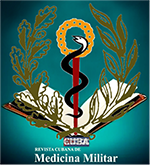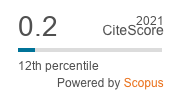Factores asociados con la aneuploidía cromosómica fetal en mujeres embarazadas de alto riesgo
Palabras clave:
amniocentesis, aneuploidía cromosómica, embarazo de alto riesgo, cribado prenatal, ecografía prenatalResumen
Introducción: La aneuploidía cromosómica (AC) es una de las principales causas de aborto espontáneo y anomalías congénitas, particularmente prevalente entre las mujeres embarazadas de alto riesgo.
Objetivo: Identificar los principales predictores asociados con la aneuploidía cromosómica fetal en mujeres embarazadas de alto riesgo.
Métodos: Se llevó a cabo un estudio prospectivo en 436 mujeres embarazadas de alto riesgo en el Hospital de Obstetricia y Ginecología de Hanói, Vietnam, desde abril de 2021 hasta diciembre de 2024. Las participantes se sometieron a amniocentesis y cariotipo. Los factores de riesgo recogidos incluyeron: edad materna, edad paterna, antecedentes de aborto espontáneo, antecedentes de parto de hijos con defectos congénitos, exposición ocupacional a productos químicos, lugar de residencia y hallazgos anormales en ecografías fetales. Se realizó un análisis estadístico utilizando regresión logística univariante y multivariante.
Resultados: La tasa general de aneuploidía cromosómica fue del 11,2 %; la trisomía 21 fue la más común (42,9 %). En el análisis univariante, los factores de riesgo estadísticamente significativos asociados con la AC fueron: edad materna ≥ 35 años (OR= 2,3; p= 0,007), edad paterna ≥ 40 años (OR= 2,1; p= 0,033) y hallazgos ecográficos fetales anormales (OR= 2,2; p= 0,017). En el análisis multivariante, solo los hallazgos ecográficos anormales se mantuvieron estadísticamente significativos (OR= 2,06; p= 0,022).
Conclusión: La edad paterna avanzada y los hallazgos ecográficos fetales anormales actúan como predictores importantes para el cribado de la aneuploidía cromosómica fetal en mujeres embarazadas de alto riesgo.
Descargas
Citas
1. Kagan KO, Sonek J, Kozlowski P. Antenatal screening for chromosomal abnormalities. Archives of gynecology obstetrics [Internet]. 2022; 305(4):825-835. DOI: 10.1007/s00404-022-06477-5
2. Melado L, Lawrenz B, Nogueira D, Raberi A, Patel R, Bayram A, et al. Features of chromosomal abnormalities in relation to consanguinity: analysis of 10,556 blastocysts from IVF/ICSI cycles with PGT-A from consanguineous and non-consanguineous couples [Internet]. Scientific reports. 2023; 13(1):8857. DOI: 10.1038/s41598-023-36014-6
3. Chen Y, Lai Y, Xu F, Qin H, Tang Y, Huang X, et al. The application of expanded noninvasive prenatal screening for genome-wide chromosomal abnormalities and genetic counseling [Internet]. Journal of Maternal-Fetal Neonatal Medicine. 2021; 34(16):2710-2716. DOI: 10.1080/14767058.2021.1907333
4. American College of Obstetricians Gynecologists, Society for Maternal-Fetal Medicine. Screening for fetal chromosomal abnormalities: ACOG practice bulletin, number 226 [Internet]. Obstetrics Gynecology. 2020; 136(4):e48-e69. DOI: 10.1097/AOG.0000000000004084
5. Nagaoka SI, Hassold TJ, Hunt PA. Human aneuploidy: mechanisms and new insights into an age-old problem [Internet]. Nature Reviews Genetics. 2012; 13(7):493-504. DOI: 10.1038/nrg3245
6. Elmerdahl FL, Ølgaard SM, Roos L, Petersen OB, Rode L, Hartwig T, et al. Maternal age and the risk of fetal aneuploidy: a nationwide cohort study of more than 500 000 singleton pregnancies in Denmark from 2008 to 2017 [Internet]. Acta Obstetricia et Gynecologica Scandinavica. 2024; 103(2):351-359. DOI: 10.1111/aogs.14713
7. Li J, Yang M, Chen J, Wang D, Sun H, Wang Z, et al. Prenatal exposure to bisphenols, metals, and risk of fetal chromosome numerical abnormalities in high-risk pregnancies: Independent, combined, and interactive effects [Internet]. Journal of Environmental Sciences. 2025. DOI: 10.1016/j.jes.2025.02.043
8. Melo P, Dhillon-Smith R, Islam MA, Devall A, Coomarasamy A. Genetic causes of sporadic and recurrent miscarriage [Internet]. Fertility Sterility. 2023; 120(5):940-944. DOI: 10.1016/j.fertnstert.2023.08.952
9. Kaltsas A, Moustakli E, Zikopoulos A, Georgiou I, Dimitriadis F, Symeonidis EN, et al. Impact of advanced paternal age on fertility and risks of genetic disorders in offspring [Internet]. Genes. 2023; 14(2):486. DOI: 10.3390/genes14020486
10. Zhang R, Chen X, Wang D, Chen X, Wang C, Zhang Y, et al. Prevalence of chromosomal abnormalities identified by copy number variation sequencing in high-risk pregnancies, spontaneous abortions, and suspected genetic disorders [Internet]. Journal of International Medical Research. 2020; 47(3):1169-1178. DOI: 10.1177/0300060518818020
11. Morgan T, Tan CD, Della-Torre M, Jackson-Bey T, DiGiovanni L, Enakpene CA. Determinant of prenatal diagnostic testing among women with increased risk of fetal aneuploidy and genetic disorders [Internet]. American journal of perinatology. 2024; 41(04):470-477. DOI: 10.1055/a-1692-0309
12. Malone FD, Canick JA, Ball RH, Nyberg DA, Comstock CH, Bukowski R, et al. First-trimester or second-trimester screening, or both, for Down's syndrome [Internet]. New England Journal of Medicine. 2005; 353(19):2001-2011. DOI: 10.1056/NEJMoa043693
13. Skakkebæk NE, Lindahl-Jacobsen R, Levine H, Anna-Maria A, Jørgensen N, Main KM, et al. Environmental factors in declining human fertility [Internet]. Nature Reviews Endocrinology. 2022; 18(3):139-57. DOI: https://doi.org/10.1038/s41574-021-00598-8
14. Li H, Hu J, Wu Q, Qiu J, Zhang L, Zhu J. Chromosomal abnormalities detected by chromosomal microarray analysis and pregnancy outcomes of 4211 fetuses with high-risk prenatal indications [Internet]. Scientific Reports. 2024; 14(1):15920. DOI: 10.1038/s41598-024-67123-5
15. Seaton SE, Rankin J, Cavero‐Carbonell C, Garne E, Gissler M, Loane M, et al. The healthcare needs of children with Down syndrome in the first year of life: an analysis of the EUROlinkCAT data linkage study [Internet]. Paediatric Perinatal Epidemiology. 2025; 2025:1-8. DOI: 10.1111/ppe.13176
16. Zhang Y, Xu H, Zhang W, Liu K. Non-invasive prenatal testing for the detection of trisomy 13, 18, and 21 and sex chromosome aneuploidies in 68,763 cases [Internet]. Frontiers in Genetics. 2022; 13:864076. DOI: 10.3389/fgene.2022.864076
17. Essers R, Lebedev IN, Kurg A, Fonova EA, Stevens SJC, Koeck RM, et al. Prevalence of chromosomal alterations in first-trimester spontaneous pregnancy loss [Internet]. Nature Medicine. 2023; 29(12):3233-3242. DOI: 10.1038/s41591-023-02645-5
18. Dowlut-McElroy T, Davis S, Howell S, Gutmark-Little I, Bamba V, Prakash S, et al. Cell-free DNA screening positive for monosomy X: clinical evaluation and management of suspected maternal or fetal Turner syndrome [Internet]. American journal of obstetrics gynecology. 2022; 227(6):862-870. DOI: 10.1016/j.ajog.2022.07.004
19. Beverley R, Snook ML, Brieño-Enríquez MA. Meiotic cohesin and variants associated with human reproductive aging and disease [Internet]. Frontiers in cell developmental biology. 2021; 9:710033. DOI: 10.3389/fcell.2021.710033
20. Cimadomo D, Fabozzi G, Vaiarelli A, Ubaldi N, Ubaldi FM, Rienzi L. Impact of maternal age on oocyte and embryo competence [Internet]. Frontiers in endocrinology. 2018; 9:327. DOI: 10.3389/fendo.2018.00327
21. Pendina AA, Krapivin MI, Chiryaeva OG, Petrova LI, Pashkova EP, Golubeva AV, et al. Chromosomal Abnormalities in Miscarriages and Maternal Age: New Insights from the Study of 7118 Cases [Internet]. Cells. 2024; 14(1):8. DOI: 10.3390/cells14010008
22. Kong A, Frigge ML, Masson G, Besenbacher S, Sulem P, Magnusson G, et al. Rate of de novo mutations and the importance of father’s age to disease risk [Internet]. Nature. 2012; 488(7412):471-475. DOI: 10.1038/nature11396
23. Socolov D, Socolov R, Gorduza VE, Butureanu T, Stanculescu R, Carauleanu A, et al. Increased nuchal translucency in fetuses with a normal karyotype—diagnosis and management: an observational study [Internet]. Medicine. 2017; 96(29):e7521. DOI: 10.1097/MD.0000000000007521
Descargas
Publicado
Cómo citar
Número
Sección
Licencia
Derechos de autor 2025 Anh Dao The, Hung Ho Sy, Bac Nguyen Duy, Truong Dang Tien

Esta obra está bajo una licencia internacional Creative Commons Atribución-NoComercial-CompartirIgual 4.0.
Aquellos autores/as que tengan publicaciones con esta revista, aceptan los términos siguientes:- Los autores/as conservarán sus derechos de autor y garantizarán a la revista el derecho de primera publicación de su obra, el cual estará simultáneamente sujeto a la Licencia de reconocimiento de Creative Commons. Los contenidos que aquí se exponen pueden ser compartidos, copiados y redistribuidos en cualquier medio o formato. Pueden ser adaptados, remezclados, transformados o creados otros a partir del material, mediante los siguientes términos: Atribución (dar crédito a la obra de manera adecuada, proporcionando un enlace a la licencia, e indicando si se han realizado cambios); no-comercial (no puede hacer uso del material con fines comerciales) y compartir-igual (si mezcla, transforma o crea nuevo material a partir de esta obra, podrá distribuir su contribución siempre que utilice la misma licencia que la obra original).
- Los autores/as podrán adoptar otros acuerdos de licencia no exclusiva de distribución de la versión de la obra publicada (p. ej.: depositarla en un archivo telemático institucional o publicarla en un volumen monográfico) siempre que se indique la publicación inicial en esta revista.
- Se permite y recomienda a los autores/as difundir su obra a través de Internet (p. ej.: en archivos telemáticos institucionales o en su página web) antes y durante el proceso de envío, lo cual puede producir intercambios interesantes y aumentar las citas de la obra publicada.






